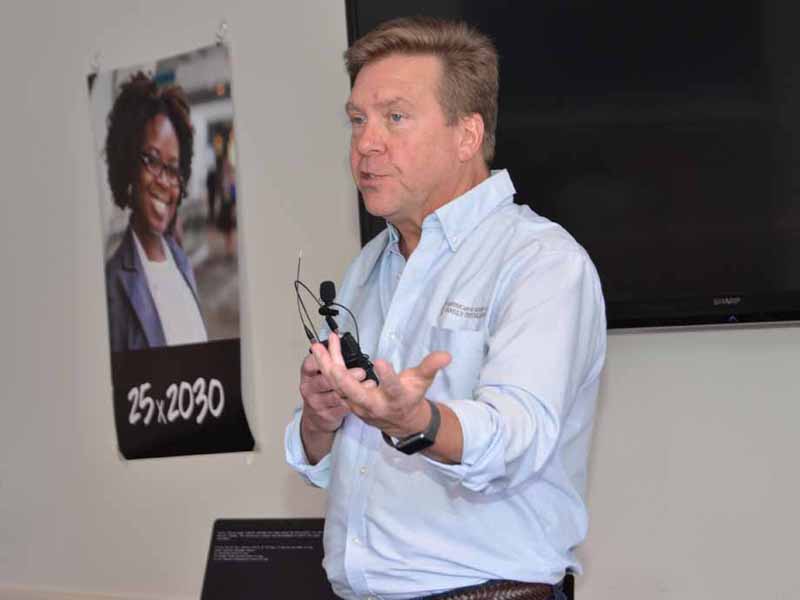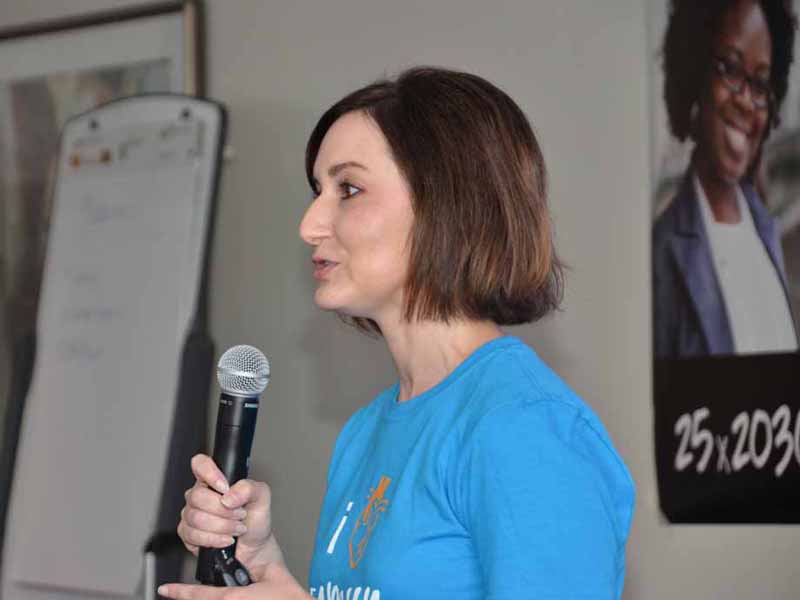AAFP Hosts Launch of 25 x 2030 Student Choice Collaborative
Family Medicine Organizations Share Common Goal
September 05, 2018 01:52 pm Sheri Porter – Several family medicine organizations kicked off a long-term initiative dubbed the 25 x 2030 Student Choice Collaborative during a fast-paced meeting at AAFP headquarters in Leawood, Kan., on Aug. 30-31.
Just as its name implies, leaders in this effort have set their sights on a hefty goal: Simply put, they will work for the next 10-plus years to ensure that by 2030, 25 percent of combined U.S. allopathic and osteopathic medical school seniors select family medicine as their specialty.
Right now, that figure stands at about 12 percent, said Clif Knight, M.D., the AAFP's senior vice president for education. "We want to more than double that," he told AAFP News in an interview a few days before the meeting.
"This is an opportunity to partner with other family medicine organizations to tackle a goal set together during the Family Medicine for America's Health (FMAHealth) project," said Knight.
He pointed out that as the FMAHealth initiative winds down, the AAFP is stepping up to the plate.

AAFP Senior Vice President for Education Clif Knight, M.D., speaking at an event at AAFP headquarters, tells attendees about his first positive encounter as a medical student with the family medicine interest group (FMIG) on his campus. "Today at the AAFP, we love our FMIGs because this is where our medical students have an opportunity to connect with mentors and role models."
"The AAFP will take the lead on overseeing the efforts of the collective group on this project," said Knight.
He discussed some of the tactics and priorities that would be tossed on the table during a brainstorming session, including how to ensure that the right students -- those likely to enter the family medicine pipeline -- are admitted to medical school, and understanding how some medical schools already have increased the percentage of graduates choosing family medicine.
"We need to identify and replicate those success stories so that we can achieve an absolute increase of 1 to 2 percent in family medicine recruits per year." said Knight. "With that kind of incremental increase, we'll achieve our goal."
For some readers, a little background information may be helpful. Back in August 2013, the AAFP joined seven other national family medicine organizations in a collaboration that became known as FMAHealth. The organizations came together to identify the challenges and opportunities facing family medicine in America's fast-changing health care environment.
Story Highlilghts
It was representatives from those organizations, and others, who participated in the recent launch. Most of the eight FMAHealth founders participated; those eight family medicine organizations are the AAFP, the AAFP Foundation, the American Board of Family Medicine, the American College of Osteopathic Family Physicians, the Association of Departments of Family Medicine, the Association of Family Medicine Residency Directors, the North American Primary Care Research Group and the Society of Teachers of Family Medicine.
During opening remarks, Christina Kelly, M.D., of Richmond Hill, Ga., chair of the FMAHealth Workforce Education & Development Tactic Team, explained that her team was given a tough assignment several years ago by the FMAHealth Board of Directors.
The team was charged with "increasing medical student choice of family medicine through multiple strategies -- including enhanced resident and faculty mentoring with a specific emphasis on building a diverse workforce that addresses health disparities," said Kelly.
"And as a team, we were excited by the opportunity as we went through a process to understand current work being done by family medicine organizations. We re-examined the full spectrum of medical education and prioritized areas of opportunity," she added.
"We're here today to determine next steps so that all of the students you're thinking of right now will choose family medicine -- and we'll reach the 25 by 30 goal."
Knight acknowledged the tactic team's three years of hard work as he also welcomed the 40-some participants.
"A lot of time, energy and effort went into getting to this point. We have achieved a great outcome -- especially in the context of bringing all eight organizations together to decide on a common goal, which I think in itself is a big accomplishment," he said.
"The AAFP is really thrilled to take this handoff from the tactic team that's been working on this the last few years," because creating a sustainable family physician workforce is one of the AAFP's top four objectives, said Knight.
He acknowledged the enormity of the 25 percent goal, and he noted that to achieve that goal, thousands of medical students must be motivated to select and train in family medicine residency programs.

Christina Kelly, M.D., chair of the Family Medicine for America's Health Workforce Education & Development Tactic Team, provides participants at the recent 25 x 2030 Student Choice Collaborative with a summary of her team's three years of work. Among a host of other issues, she says, "We decided increasing student choice and improving workforce diversity should be simultaneous efforts."
"But what it boils down to for each one of those students is making an individual decision for family medicine. I don't want us to lose sight of the fact that this really is a very personal decision," said Knight.
The collaborative has to help get the right students into medical school and then make an impression on them once they are there, through family medicine interest groups and by connecting them with family physician mentors and role models, he added.
"Thank you all for allowing the AAFP to take the lead on this shared goal, and we look forward to finding ways to have that individual impact on thousands of medical students," said Knight.
Stay tuned for more; AAFP News will provide updates on the 25 by 2030 collaborative as the initiative moves forward.